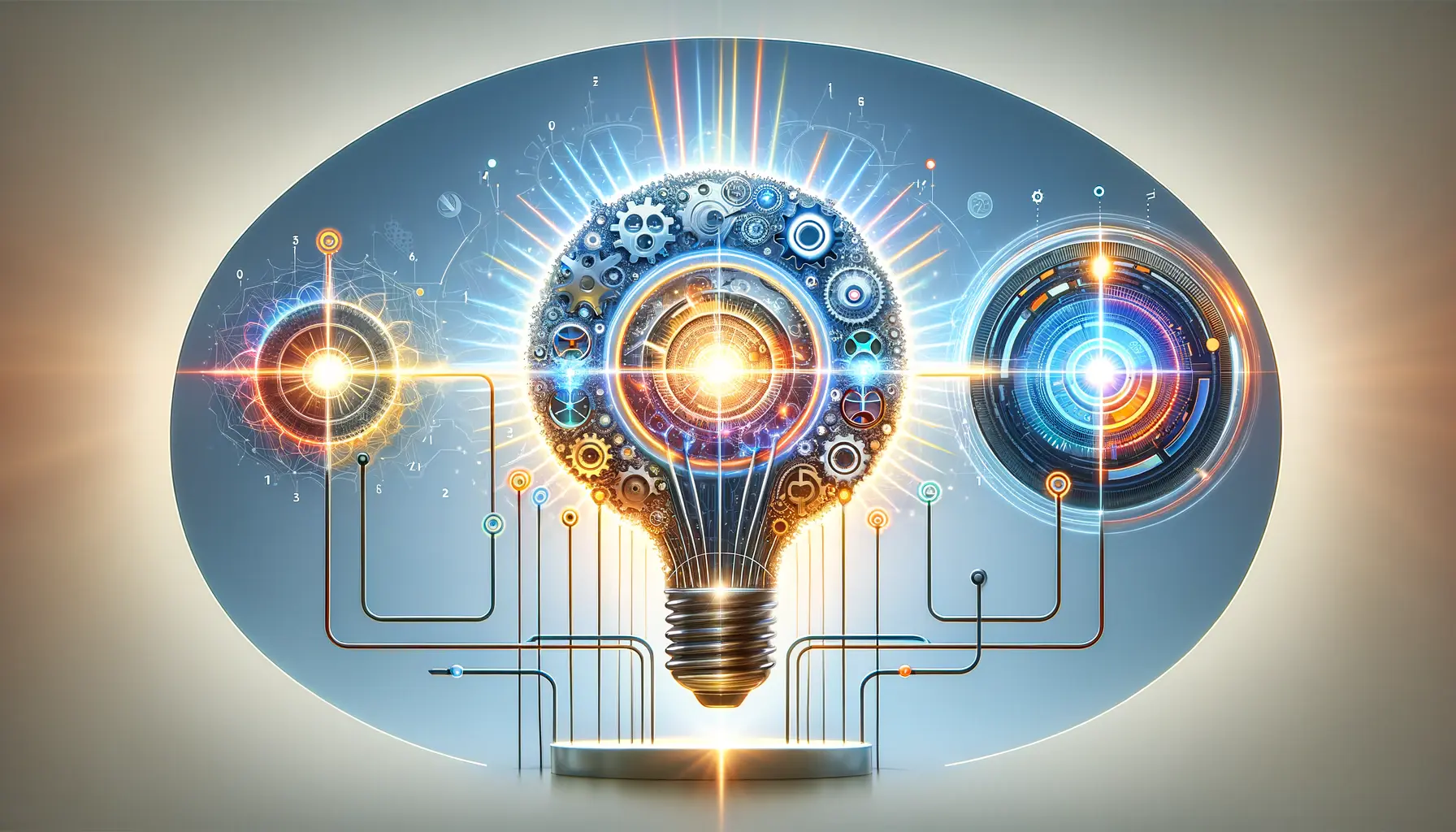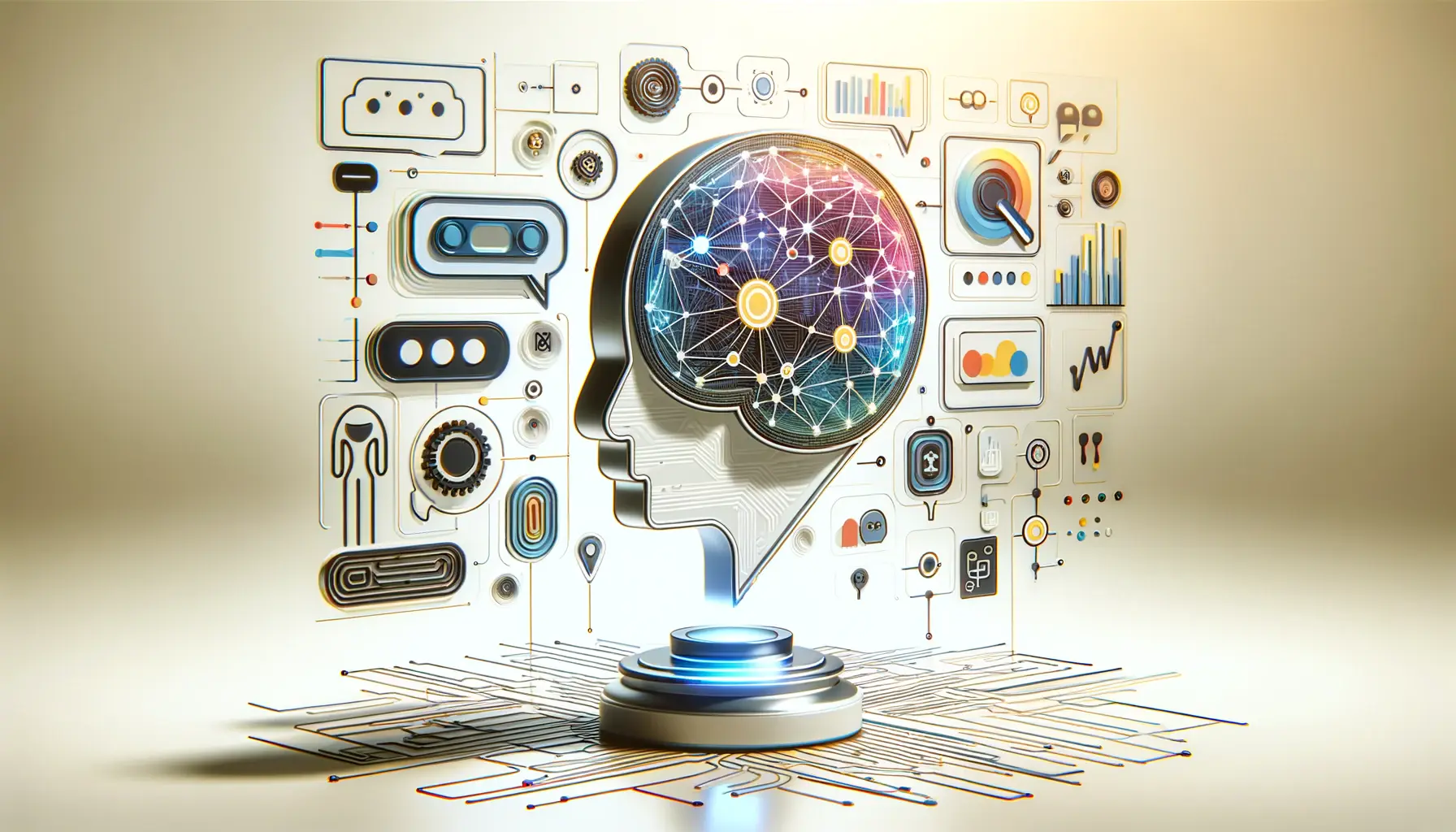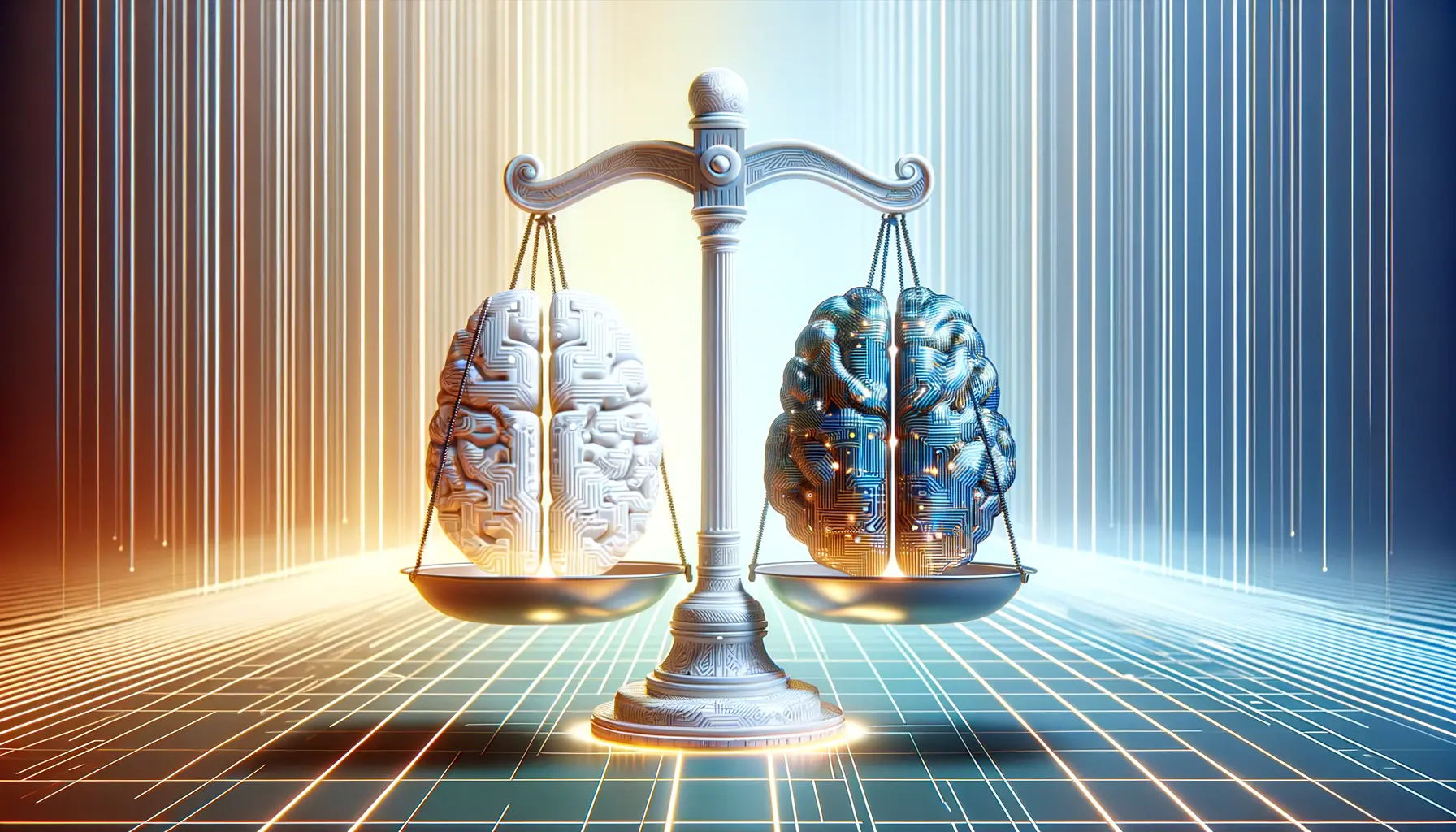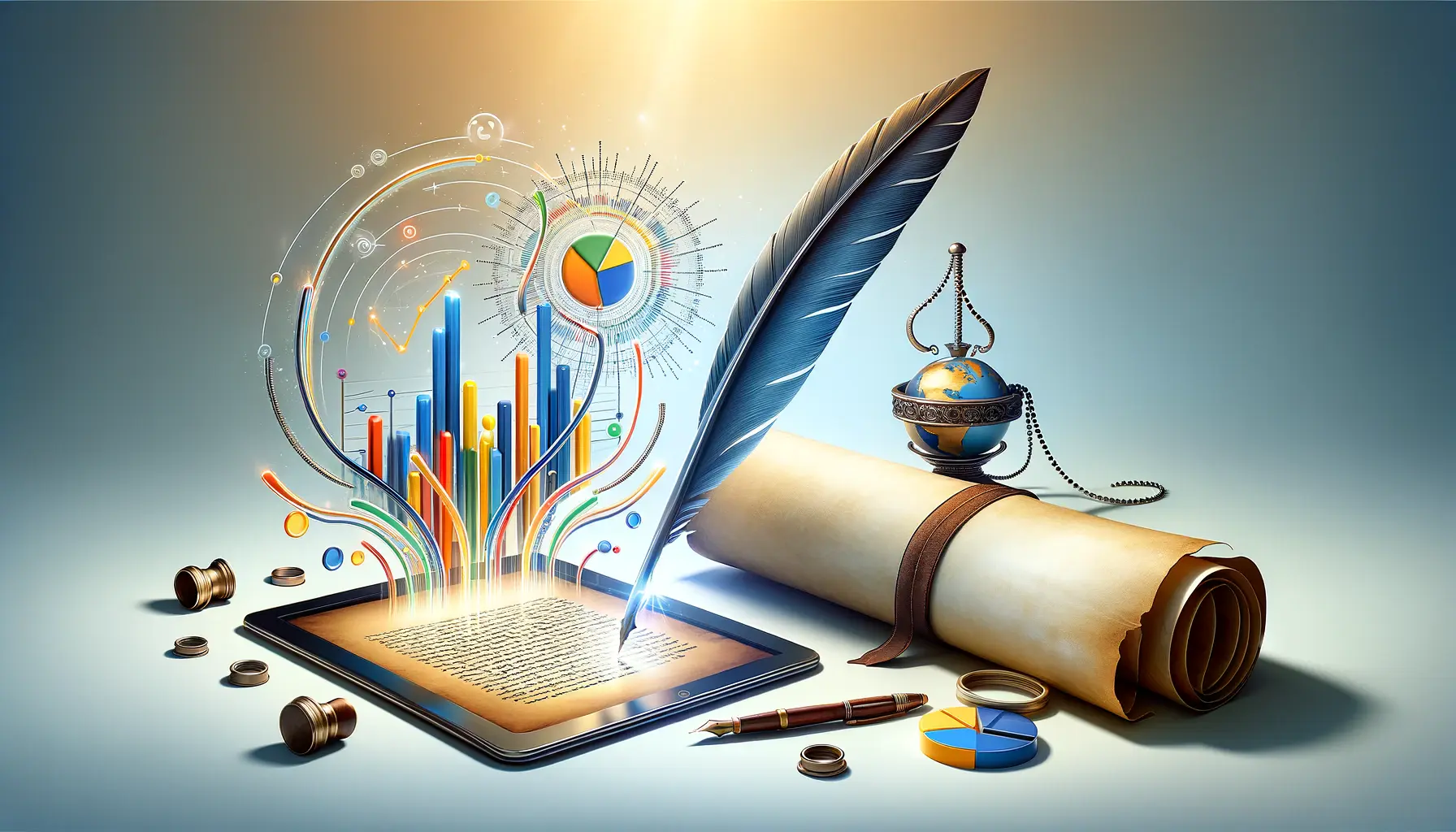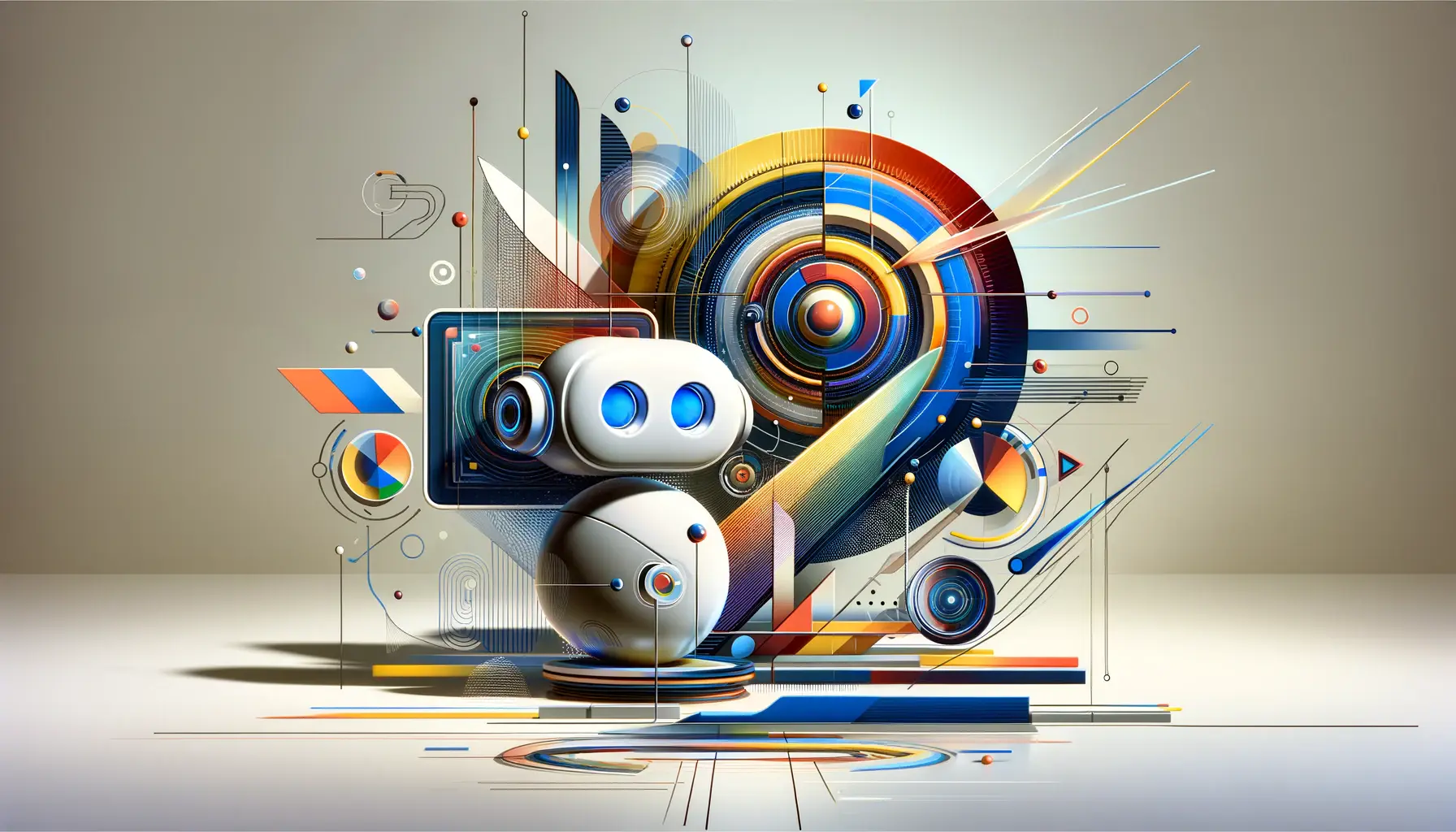Exploring the creative process in today’s digital age reveals a fascinating intersection between human ingenuity and artificial intelligence.
Google’s Bard, a cutting-edge AI developed by one of the world’s leading tech giants, stands at the forefront of this convergence.
This article delves into how Bard is reshaping the creative landscape, offering tools and insights that transform ideas into tangible outcomes.
By leveraging Bard’s capabilities, creators can navigate the complexities of the creative process, from the initial spark of inspiration to the final stages of execution.
The introduction of Bard by Google marks a significant milestone in the realm of artificial intelligence.
Designed to understand and generate human-like text, Bard is not just another chatbot.
Its foundation on Google’s vast data and advanced algorithms enables it to assist in various creative endeavors, making it a valuable ally for anyone looking to enhance their creative process.
Whether you’re a writer, designer, marketer, or entrepreneur, Bard’s ability to provide instant, relevant information and generate innovative ideas can be a game-changer in your creative workflow.
- Understanding Google’s Bard and Its Impact on Creativity
- Exploring Bard’s Capabilities in Idea Generation
- Optimizing Content Creation with Bard
- Streamlining the Editing and Revision Process
- Facilitating Collaborative Creative Efforts
- Empowering Personalized Customer Experiences
- Integrating Bard with Other Digital Tools and Platforms
- Unleashing Creativity with Google’s Bard: A New Horizon
- FAQs on Google’s Bard: Unveiling Its Creative Potential
Understanding Google’s Bard and Its Impact on Creativity
The Genesis of Bard
Google’s Bard was born out of the need to create a more intuitive and interactive AI that could assist with creative tasks in a more human-like manner.
By drawing from an extensive database of information and employing sophisticated language models, Bard is capable of understanding context, generating ideas, and providing solutions that resonate with human creativity.
This AI tool represents a leap forward in making technology an integral part of the creative process, offering a blend of inspiration and practicality that was previously hard to achieve.
The significance of Bard in the creative domain cannot be overstated.
Its ability to process and analyze vast amounts of data in real-time means that it can offer insights and suggestions that might not be immediately apparent to the human mind.
This capability not only accelerates the ideation phase but also enriches the creative output with perspectives and solutions that are both diverse and inclusive.
Revolutionizing the Creative Workflow
Bard’s impact on the creative workflow is profound.
By acting as a digital muse, Bard can inspire creators with prompts, ideas, and even draft content that can be refined and developed further.
This AI tool is particularly beneficial in overcoming creative blocks, offering fresh perspectives when you’re stuck, and ensuring that the creative process keeps moving forward.
For instance, writers can use Bard to generate story outlines or character sketches, while marketers can leverage it to come up with innovative campaign ideas.
Moreover, Bard’s versatility extends beyond mere idea generation.
It can assist in research by summarizing information from various sources, thus saving valuable time and effort that can be redirected towards more creative pursuits.
This aspect of Bard is especially useful for projects that require a deep understanding of a topic or trend, enabling creators to build their work on a solid foundation of knowledge.
Bard’s role in enhancing creativity lies in its ability to provide instant access to a world of information and ideas, making it an indispensable tool for anyone engaged in creative work.
Exploring Bard’s Capabilities in Idea Generation
The journey from conception to realization of creative projects often begins with the generation of a core idea.
Google’s Bard excels in this initial phase, offering a plethora of capabilities that stimulate creativity and foster the development of innovative concepts.
Its advanced algorithms and access to a broad spectrum of data enable Bard to serve as a catalyst for creative thought, pushing the boundaries of conventional idea generation.
One of Bard’s standout features is its ability to engage users in a dynamic dialogue, where the exchange of questions and answers leads to the birth of new ideas.
This interactive process is akin to brainstorming with a knowledgeable partner, one who brings a vast repository of information to the table.
Here’s how Bard can be utilized to kickstart the creative process:
- Idea Expansion: Bard can take a seed of an idea and expand it into a range of possibilities. This is particularly useful for individuals or teams looking to explore different directions for their projects.
- Overcoming Creative Blocks: When creators hit a roadblock, Bard’s diverse suggestions can provide the necessary push to overcome these obstacles, ensuring the flow of creative ideas remains uninterrupted.
- Research and Development: Bard can quickly gather and summarize relevant information, aiding in the research phase of creative projects. This ensures that ideas are not only innovative but also grounded in factual accuracy.
Case Studies: Bard in Action
Real-world applications of Bard in the creative process provide insight into its effectiveness.
For instance, a graphic designer struggling with conceptualizing a brand’s visual identity might turn to Bard for inspiration.
By inputting the brand’s core values and target audience, Bard can suggest themes, color schemes, and design motifs that resonate with the brand’s essence.
Similarly, content creators can leverage Bard to generate article titles or video concepts that are likely to engage their audience.
By analyzing trends and user interests, Bard can propose topics that are timely and relevant, thereby increasing the potential for content to make an impact.
Incorporating Bard into the idea generation phase not only enriches the creative process but also ensures that ideas are diverse, innovative, and aligned with the project’s goals.
Optimizing Content Creation with Bard
In the realm of digital content creation, the ability to produce engaging, informative, and high-quality content consistently is paramount.
Bard’s sophisticated language processing and generation capabilities make it an invaluable asset for content creators across various platforms.
Whether it’s for blogs, social media, or multimedia presentations, Bard can streamline the content creation process, enhancing both efficiency and creativity.
Content creators can harness Bard’s potential in several ways to optimize their workflows:
- Content Ideation: Bard can generate a wide array of content ideas based on current trends, audience preferences, and specific niches, helping creators stay ahead of the curve.
- Writing Assistance: From drafting initial outlines to suggesting edits and improvements, Bard acts as a virtual writing assistant, refining the content creation process.
- Language Translation: Bard’s multilingual capabilities enable creators to produce content in various languages, broadening their audience reach and enhancing global engagement.
Enhancing Creativity and Engagement
Beyond the mechanics of content production, Bard plays a crucial role in elevating the creative quality of content.
Its ability to suggest unique angles, incorporate diverse perspectives, and generate compelling narratives allows creators to produce content that stands out.
Moreover, Bard can help tailor content to evoke specific emotional responses or convey complex ideas in accessible ways, thereby increasing audience engagement and retention.
For example, a digital marketer aiming to create a compelling campaign for a new product might use Bard to brainstorm creative slogans, develop persuasive product descriptions, or craft engaging social media posts.
Similarly, educators and trainers can utilize Bard to design educational content that is both informative and captivating, ensuring learners remain motivated and engaged.
Bard’s contribution to content creation extends beyond mere efficiency; it enriches the content with creativity, relevance, and appeal, making it more likely to resonate with the intended audience.
Streamlining the Editing and Revision Process
The editing and revision phase is critical in transforming a good piece of content into an exceptional one.
Bard’s capabilities extend into this domain, offering tools that streamline the editing process, enhance clarity, and ensure the content’s alignment with its intended purpose and audience.
By leveraging Bard, creators can refine their work with greater ease and precision, ensuring the final product is polished and impactful.
Utilizing Bard in the editing process involves several key strategies:
- Grammar and Style Enhancements: Bard can suggest grammatical corrections and stylistic improvements, helping to elevate the quality of writing without compromising the author’s voice.
- Content Optimization: It can analyze content for SEO, readability, and engagement, offering suggestions to optimize for search engines and audience preferences.
- Fact-Checking and Accuracy: Bard’s access to vast databases allows for quick fact-checking and verification, ensuring the content’s credibility and accuracy.
Personalizing Content for Target Audiences
One of Bard’s standout features is its ability to tailor content to specific audiences.
By understanding the nuances of language, culture, and interests that resonate with different groups, Bard can help creators adjust their content to appeal more directly to their target demographic.
This personalization can significantly enhance the content’s relevance and engagement, fostering a stronger connection between the creator and the audience.
For instance, a blogger targeting a tech-savvy audience might use Bard to incorporate the latest technological trends and jargon into their posts, making them more appealing to their readers.
Similarly, a company looking to expand its market reach internationally could use Bard to adapt its website and marketing materials to reflect cultural nuances and preferences, thereby increasing its global appeal.
Effective editing and revision not only improve the quality of content but also ensure it communicates the intended message clearly and compellingly. Bard’s editing tools are designed to support creators in achieving this goal, making the revision process more efficient and effective.
Facilitating Collaborative Creative Efforts
The collaborative nature of many creative projects requires tools and platforms that can seamlessly integrate the contributions of multiple individuals.
Bard’s design inherently supports collaborative efforts, enabling teams to work together more effectively, regardless of their physical locations.
By providing a shared platform for idea generation, content development, and project management, Bard facilitates a cohesive creative process that leverages the strengths and insights of all team members.
Key aspects of Bard’s support for collaboration include:
- Real-time Idea Sharing: Bard allows team members to input ideas and receive feedback in real time, fostering an environment of dynamic collaboration and immediate innovation.
- Version Control and Editing: It offers tools for tracking changes, suggesting edits, and managing versions, ensuring that all team members are working on the most current version of a project.
- Accessibility and Inclusivity: With its intuitive interface and multilingual capabilities, Bard ensures that team members from diverse backgrounds can contribute effectively, making the creative process more inclusive.
Enhancing Team Dynamics and Output
Beyond facilitating the mechanics of collaboration, Bard plays a significant role in enhancing the quality of team interactions and the creative output.
By streamlining communication and providing a platform for the exchange of ideas, Bard helps teams to overcome common challenges such as miscommunication, idea silos, and workflow bottlenecks.
This not only improves the efficiency of the creative process but also leads to more innovative and diverse outcomes.
Consider a scenario where a cross-functional team is working on developing a new product.
Bard can serve as a central hub for brainstorming sessions, allowing designers, engineers, marketers, and other stakeholders to contribute their perspectives and expertise.
This collaborative approach, facilitated by Bard, ensures that the final product is well-rounded, meets the needs of its target audience, and stands out in the market.
The integration of Bard into collaborative projects transforms the creative process into a more dynamic, inclusive, and productive endeavor, ultimately leading to higher quality outcomes and more successful projects.
Empowering Personalized Customer Experiences
In today’s digital landscape, personalization is key to engaging and retaining customers.
Bard’s advanced AI capabilities enable businesses to craft personalized customer experiences at scale, from tailored content and recommendations to interactive customer service.
By analyzing customer data and preferences, Bard can help businesses anticipate needs, personalize interactions, and build stronger relationships with their audience.
Strategies for leveraging Bard in personalization include:
- Customized Content Creation: Bard can generate content that caters to the interests and preferences of individual users, enhancing engagement and loyalty.
- Interactive Customer Support: It can provide real-time, personalized support, answering queries and offering solutions based on the customer’s history and preferences.
- Dynamic Product Recommendations: Bard can analyze customer behavior to offer tailored product recommendations, increasing the likelihood of conversion and repeat business.
Transforming Customer Interactions
The ability to deliver personalized experiences transforms the way businesses interact with their customers.
Bard’s role in this transformation is multifaceted, enabling not just customized content delivery but also a deeper understanding of customer needs and behaviors.
This leads to more meaningful interactions, higher customer satisfaction, and ultimately, stronger brand loyalty.
For example, an e-commerce platform can use Bard to personalize the shopping experience for each visitor, from greeting them with a customized welcome message to suggesting products based on their browsing history and purchase patterns.
Similarly, a service provider can use Bard to offer personalized advice or support, making each customer feel valued and understood.
Ignoring the potential of AI like Bard in personalizing customer experiences is a missed opportunity for businesses to connect with their audience in a meaningful way.
Integrating Bard with Other Digital Tools and Platforms
The versatility of Google’s Bard extends to its ability to integrate with a wide array of digital tools and platforms, enhancing productivity and creativity across various applications.
From content management systems and design software to project management tools and customer relationship management (CRM) systems, Bard’s API can be seamlessly incorporated to automate tasks, generate insights, and facilitate decision-making processes.
This integration capability not only streamlines workflows but also opens up new possibilities for innovation and efficiency.
Examples of Bard’s integration with other tools include:
- Content Management Systems (CMS): Bard can automatically generate or suggest content for websites and blogs, optimizing for SEO and user engagement.
- Design Software: It can provide creative suggestions for design projects, including color schemes, layout ideas, and typography recommendations.
- Project Management Tools: Bard can assist in task assignment, progress tracking, and resource allocation, making project management more efficient.
- CRM Systems: It can analyze customer data to provide personalized communication strategies, sales insights, and customer service solutions.
Unlocking New Creative and Productive Potentials
The integration of Bard with other digital tools and platforms not only enhances the capabilities of those tools but also empowers users to explore new creative and productive potentials.
By automating routine tasks, providing data-driven insights, and facilitating seamless collaboration, Bard enables individuals and teams to focus on high-value activities that require human creativity and strategic thinking.
For instance, a marketing team can integrate Bard with their CRM and CMS to automate the creation of personalized content for different segments of their audience, ensuring that each piece is optimized for engagement and conversion.
Similarly, a software development team can use Bard in conjunction with project management tools to streamline the development process, from ideation and planning to coding and testing.
The future of creative and productive work lies in the synergy between human intelligence and artificial intelligence. Bard’s integration with digital tools and platforms exemplifies this future, offering a glimpse into a world where AI enhances human creativity and efficiency.
Unleashing Creativity with Google’s Bard: A New Horizon
The exploration of Google’s Bard in the realm of creativity and productivity has unveiled a landscape where artificial intelligence not only complements but significantly enhances human capabilities.
As we’ve journeyed through the various facets of Bard’s application, from idea generation to collaborative projects and personalized customer experiences, it’s evident that this AI tool is not just a technological advancement but a paradigm shift in how we approach creative and productive work.
The Future of Creative Processes
Google’s Bard represents the dawn of a new era in the creative process, where the barriers between imagination and execution become increasingly blurred.
The ability of Bard to understand context, generate ideas, and provide solutions has profound implications for creators across all domains.
Whether it’s writing, design, marketing, or any form of content creation, Bard acts as a catalyst that accelerates the journey from concept to completion.
- The democratization of creativity, making advanced tools accessible to a wider audience.
- The enhancement of collaborative efforts, breaking down geographical and linguistic barriers.
- The personalization of content and experiences, catering to the unique preferences of individuals.
Embracing AI in Our Creative Endeavors
As we stand on the brink of this new frontier, the integration of Bard into our creative and productive endeavors offers exciting possibilities.
The synergy between human creativity and artificial intelligence opens up new pathways for innovation, efficiency, and personalization.
By embracing Bard and similar AI tools, we can unlock our full creative potential, explore uncharted territories, and redefine the boundaries of what’s possible.
- Understanding and leveraging Bard’s capabilities to enhance our creative workflows.
- Exploring new forms of collaboration and innovation through AI-assisted processes.
- Adapting to the evolving landscape of digital content creation with AI at our side.
In conclusion, Google’s Bard is more than just an AI tool; it’s a companion in our creative journey, a bridge between idea and execution, and a harbinger of the future of creativity.
As we continue to explore and understand Bard’s full potential, we can look forward to a world where our creative visions are limited not by our tools but only by the breadth of our imagination.
FAQs on Google’s Bard: Unveiling Its Creative Potential
Explore the most common inquiries about Google’s Bard and its transformative impact on creativity and productivity.
Bard can retrieve information, summarize content, brainstorm ideas, and generate diverse forms of content efficiently.
As an experimental AI chatbot, Bard is gradually rolling out, aiming for wide accessibility with ongoing enhancements.
Bard offers instant access to information, idea generation, and content creation tools, enriching the creative workflow.
Yes, Bard can help write and refine content, including emails, blog posts, and business plans, by providing suggestions and edits.
Bard stands out for its deep integration with Google’s ecosystem, offering unique insights and content generation capabilities.
Yes, Bard can analyze customer data to deliver personalized content, recommendations, and support, enhancing engagement.
Bard facilitates real-time idea sharing, version control, and inclusive collaboration, making team projects more efficient.
Bard can be integrated with CMS, CRM systems, and more to automate tasks, provide insights, and streamline workflows.
